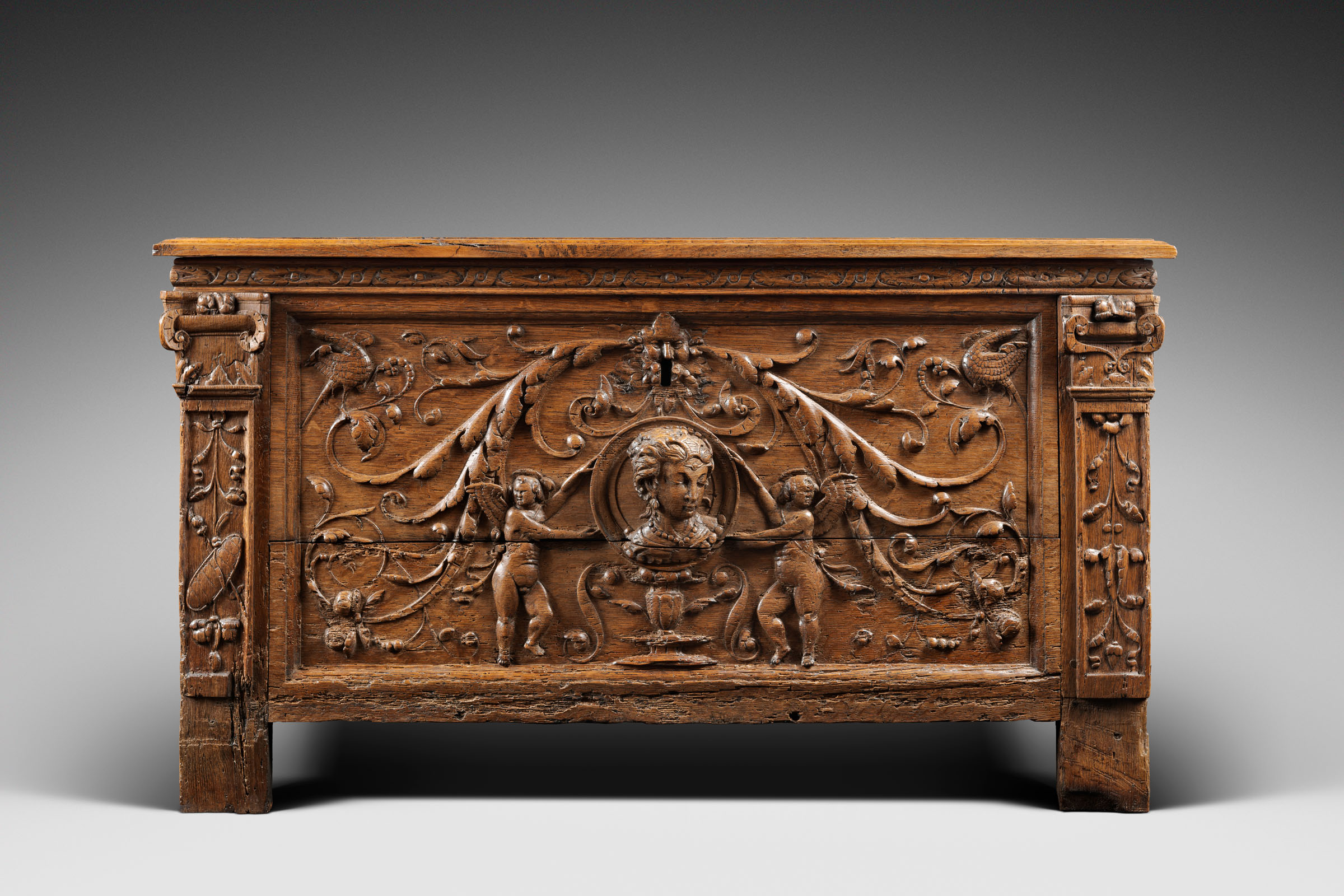Description
This small chest with beautiful proportions in light oak wood is typical of the First French Renaissance.
This Art, typically from Italy, developed under the leadership of Cardinal Georges d’Amboise, minister of Louis XII (1498-1515). The huchiers and ymagiers dexterously reproduce the great lightness of the ornamental motifs, sculpted in bas-reliefs, and inspired by Greco-Roman antiquity, such as arabesques for example.
While retaining the shapes and details of still Gothic architecture, they first introduced on the pilasters and then on the panels motifs with arabesques and grotesques, as well as symbolic floral arrangements such as cornucopias, flower vases, and the figures profiled in medallions made of a simple molding around the edge.
By arabesque we mean a composition whose central motif, often a very fine stem, a ribboned knot, a basin or a candelabra shaft, serves as the axis for a symmetrical flowering of light foliage. The grotesque, unlike the arabesque, is treated without any symmetry, but always with the same lightness. This name of cavesco comes from the discovery of painted figures in the caves of Cellins which housed the Golden House of Nero.
Here the decor is sculpted in the mass of a single facade panel framed by pilasters topped with foliage capitals at the corners. Worked in low and very high relief, the decoration is the result of extremely skillful chiseling.
Within a central medallion, the profile of a young woman stands out. The facial features and his downcast expression suggest that this is a character made in a portrait.
The finesse of the details of the headdress and the jewelry adds to the astonishing truth of the composition, thus making it possible to date this chest to the First French Renaissance. On either side, the medallion is supported by two winged angels. Below a chalice.
Above, a mascaron masking the keyhole, ivy leaves and flowered foliage spread. In the upper corners, cranes take flight. A whole resurgent vocabulary is offered to the eye, including on the pilasters decorated with grotesques on the right and decorated with a shield and a torch on the left.
A molding of woven grains, alternating with foliage grains adorn the entablature supporting the top. The sides of the trunk are made up of two panels, each centered with a diamond and separated by a frame with a mirror.
Beautifully proportioned and of great quality, this chest is worthy of the chisel of a great master of the First French Renaissance.

